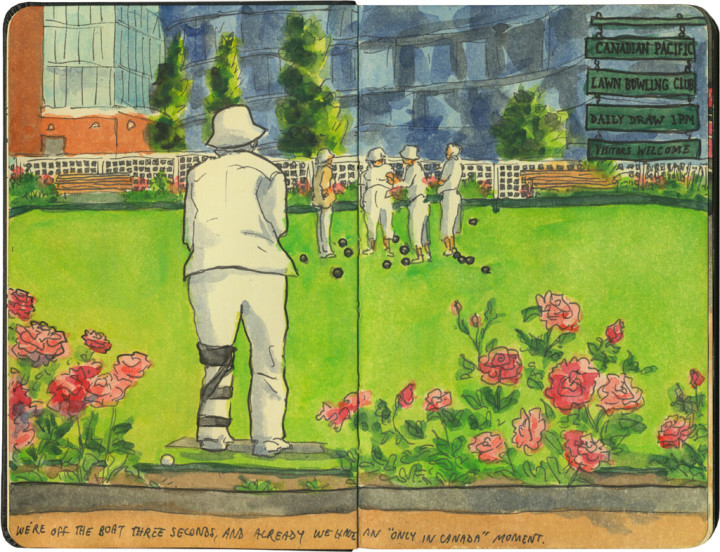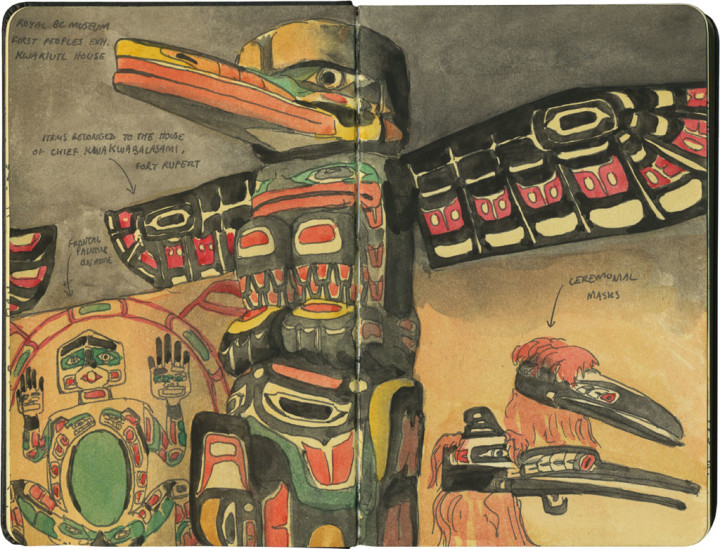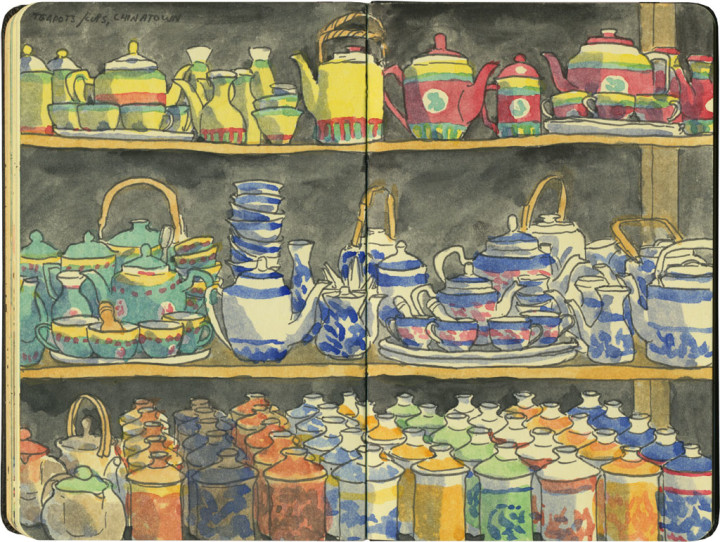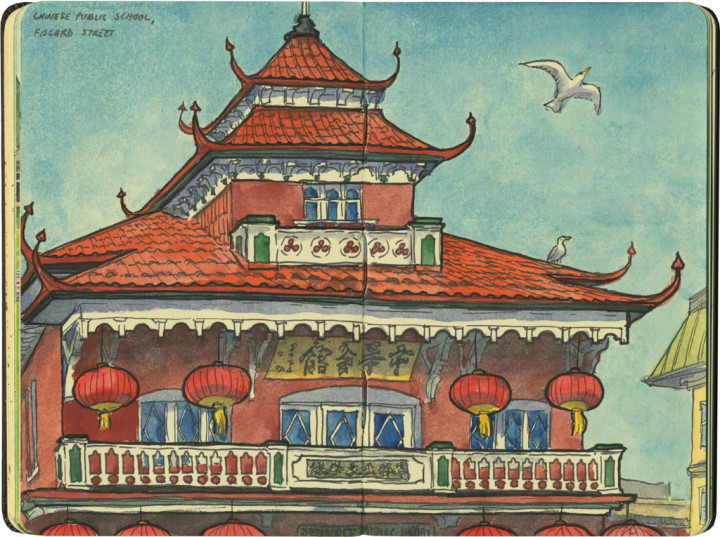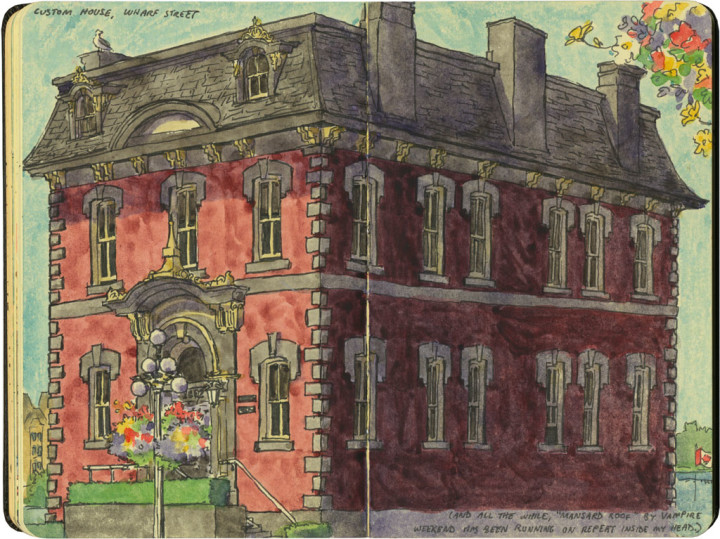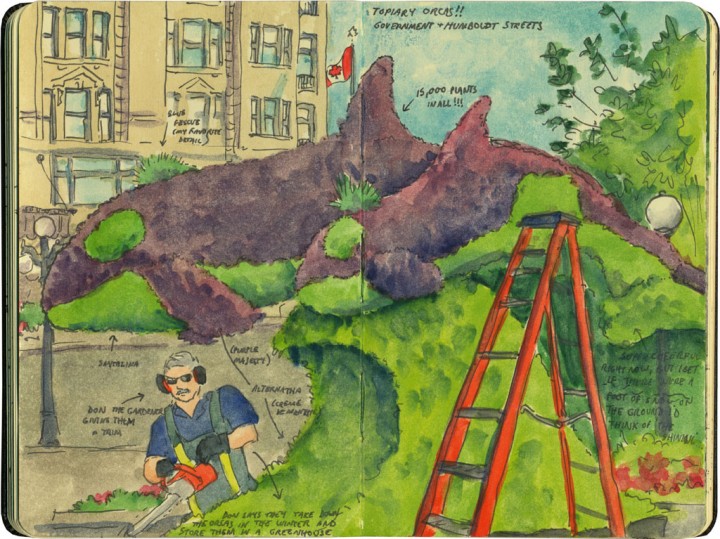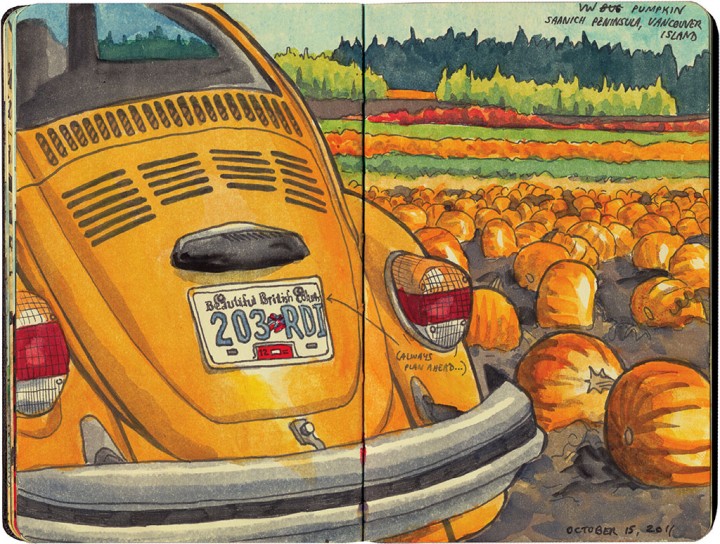Of course, there’s the kind of “museum” founded by snake-oil salesmen…and then there’s the real thing. If you really want to get a taste of Northwest art and anthropology, there’s no better place to start than the Royal British Columbia Museum in Victoria.

The museum is huge, with natural history dioramas, city artifacts, an IMAX theater, the works—but I always head straight for the First Peoples Gallery and spend hours and hours there.

Like most museums, the RBCM doesn’t allow you to bust out a paintbox in the gallery, so when I’m there, I stick to my museum routine: do the line drawing on-site, make a few pale pencil notes about color details, and fill in with a bit of watercolor later.

I’m sure my sketches aren’t entirely faithful to their subjects, since I have to simplify and fill in details from memory later… but it’s still the best way I know how to get in a good art history lesson.
Save



